Artificial intelligence detectors have completely changed the way students approach their assignments.
Even teachers are struggling to keep up with the number of tools that are introduced. Now, with AI writing tools comes AI checkers.
Tools like ChatGPT have become so good that they mimic human writing.
Most teachers are starting to find it difficult to spot a student’s work just by their writing style. So they have decided to include artificial intelligence checkers in their evaluation process.
However, not all AI checkers are created equal, and finding the right one involves a careful process.
Key Takeaways:
- ChatGPT has changed the way educators approach student assignments
- No AI checker is 100% accurate, so teachers are using them alongside other strategies
- Students have to understand the risks of using artificial intelligence in their academic work
Why Teachers Are Using AI Checkers in 2025
The simple way to answer would be: because almost every student is using artificial intelligence to write.
Teachers are starting to notice that students are submitting assignments with the same pattern and structure.
They have also noticed that students have been submitting their assignments earlier than they normally would.
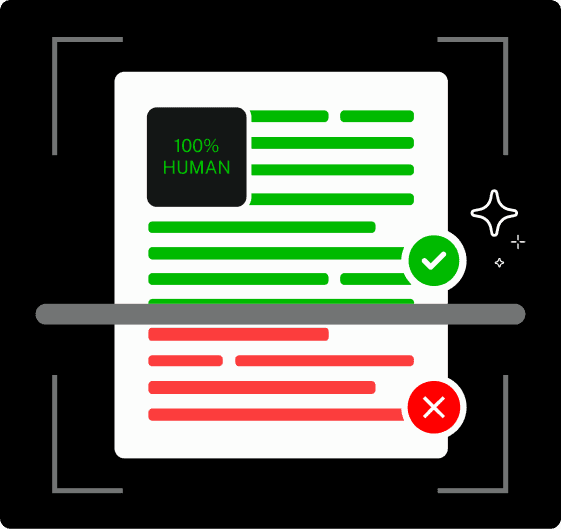
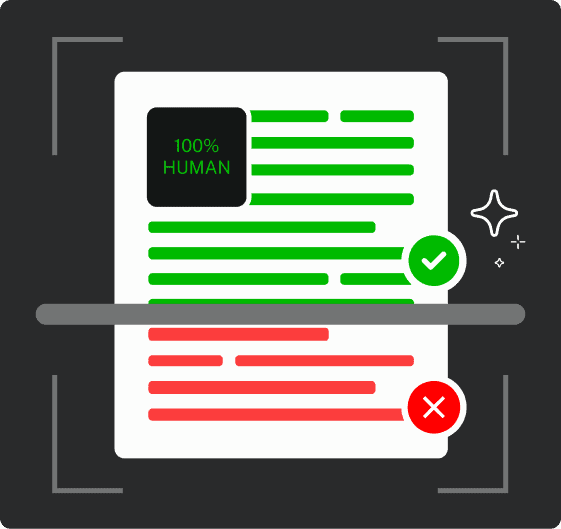
Never Worry About AI Detecting Your Texts Again. Undetectable AI Can Help You:
- Make your AI assisted writing appear human-like.
- Bypass all major AI detection tools with just one click.
- Use AI safely and confidently in school and work.
Essays that used to take weeks are suddenly being turned in with vocabulary and structures that look too advanced.
Artificial intelligence writing tools have become popular.
While some teachers do not mind if students use it as long as they are being honest, most teachers are still against over-reliance.
Teachers want fairness; if one student writes a ten-page history paper the old-fashioned way and another uses artificial intelligence in seconds, there is a big gap in effort.
That is where AI checkers come in; teachers use them to level the playing field.
AI checkers are being used in over 3500 colleges, and that should tell you how much of an issue artificial intelligence writing has become.
Now the thing is, teachers are not using checkers because they don’t trust their students. They are doing it because it is becoming difficult to distinguish human and AI writing.
Teachers are struggling to ensure there is academic integrity, and at the same time, motivate their students to learn.
They think that there must be a balance, and this is the reason why AI checkers have become a valuable tool in that process.
The Impact of ChatGPT and AI Writing Tools on Education
Artificial intelligence did not change the tech world alone. It has also advanced the way people approach education and learning.
With ChatGPT, students can now generate long essays in under a minute.
AI writing tools are changing the quality of student work. A high school student is turning in papers that are written like an undergraduate student.
Educators now notice that assignments are not written in the voice and point of view of the student.
The impact of ChatGPT is beyond essay writing. You can find students doing research, creative writing, and even solving math problems with artificial intelligence.
It would be improper to call using AI cheating; it is more of a writing partner. AI has the answers, and teachers are slowly learning to adapt to the new normal.
Schools know that their students are using these tools, so instead of banning them outright, many teachers are learning to include AI in lessons.
They have also begun seeing the need to use AI detectors to catch artificial intelligence writing.
What AI Checkers Are Teachers Using Today?

So, “What AI checker do teachers use?” The answer to this question will depend on who you ask. This is because there are many AI detection tools with different features. However, here are the top tools:
Undetectable AI Detector
One of the top tools getting attention in schools is the Undetectable AI Detector.
The tool is easy to use, accurate, and designed for daily activities; you don’t need a degree in Computer science to use it.
It also provides a detailed analysis that helps teachers understand the extent to which an essay is AI-written.
The tool has earned a 100% accuracy score from ZDNet.
This score was not just awarded; the detector was put through five tests, and it passed them all. So, you know it comes highly recommended.
The Undetectable AI Detector is reliable, and teachers use it more because it has a lower chance of producing false positives.
The tool is capable of detecting content for Artificial intelligence tools such as ChatGPT, Gemini, Claude, Llama, and others.
Undetectable AI Detector highlights AI-generated sentences so you can easily know how to change them.
Aside from AI detection, Undetectable AI has other tools, such as AI Humanizer and AI Paraphraser, that you can use to rewrite AI sentences and make your work easier.
GPTZero
GPTZero is also a good tool that can detect ChatGPT and other bots. It can also look for AI influences in sentences. It is a free tool, but you can only get comprehensive results if you pay for it.
Turnitin
Turnitin, which used to be for plagiarism checks, has now joined the AI detection industry. Teachers use this tool because it has been around for a long time.
It is only available to educational institutions, so if you want to check your work on your own before submitting, your school has to have a subscription. So you are better off using tools like Undetectable AI Detector.
Copyleaks
This is another tool teachers use to check for AI. It works well for text generated with ChatGPT, so if you decide to use it for other advanced AI writing tools, you might not get an accurate result.
These AI checkers were not developed to catch students using artificial intelligence, but to promote honesty and academic integrity. It helps teachers guide their students.
How AI Checkers Work for Teachers
Now, how do these AI checkers work for teachers? AI checkers use machine learning algorithms trained to recognize patterns relating to AI-generated content.
They look for things such as:
- Writing patterns and suspicious sections that show styles of generative AI
- Characteristics of the text, such as perplexity and burstiness
- Repetitive sentence structures
- Unusual phrases or vocabulary
- Excessive formal language
- Lack of personal voice or experience
- Unnatural transitions and flow
- Inconsistent knowledge levels within the same essay
In short, AI checkers look for patterns that sound “too artificial.”
To see how checkers work, you can use the Undetectable AI Checker to scan your AI-generated text to see the similarities between the highlighted text and the characteristics listed above. All you need to do is:
- Go to Undetectable AI Detector
- Copy and paste your text into the checker
- Click on ‘check for AI’
- Receive your results in less than a minute
- Go through the result to see the sentence flagged as AI
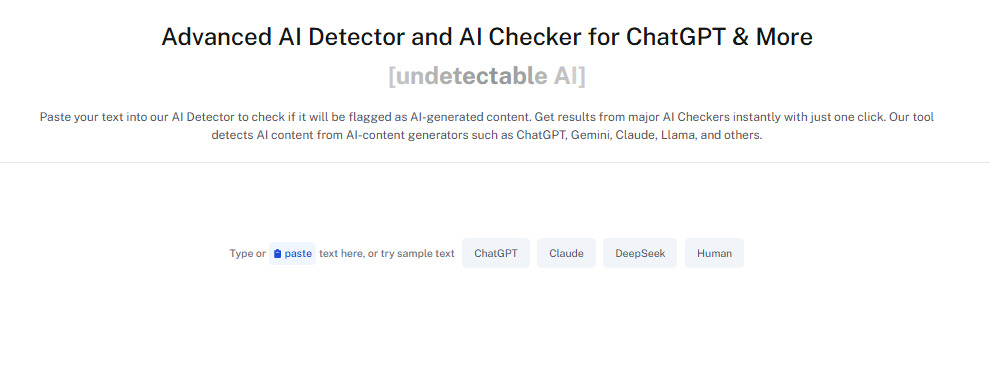
Teachers reviewing assignments that involve calculations or numerical reasoning often pair detection tools with Undetectable AI’s Math Solver, which breaks down equations step by step and helps confirm whether a student’s math process is consistent with their level of understanding.

Many schools now turn to TruthScan to detect AI-written content, giving educators an extra layer of reliability when reviewing student work.
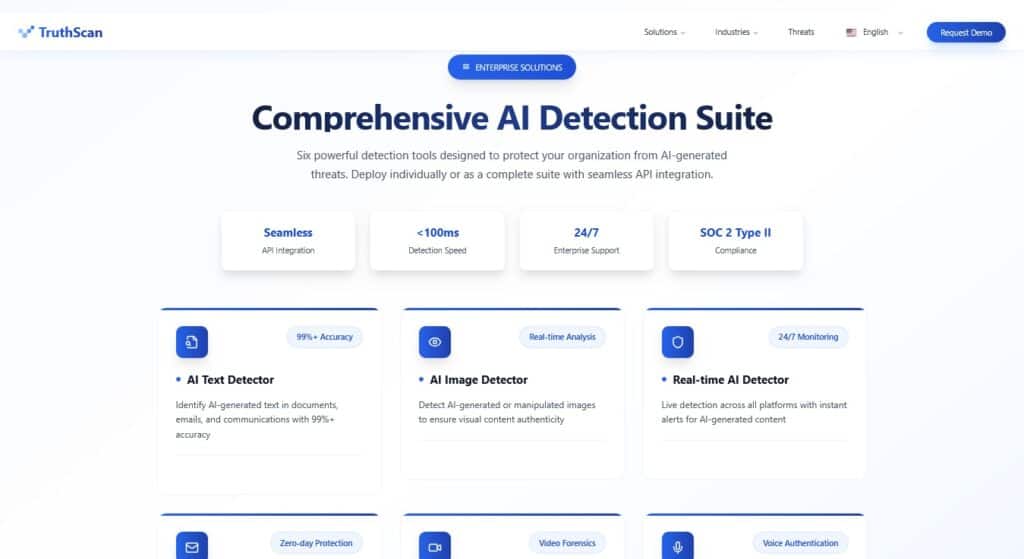
One thing to remember is that AI tools are not perfect, and they should not be relied on totally. So if a tool says a paper is 80% AI-generated, that’s not a ground for automatic failure.
What Do Schools and Teachers Say About AI Checkers?
There have always been mixed reactions about AI checkers from schools and teachers.
Most teachers support the use, while some do not, because these tools are not perfect. That’s why many schools have started encouraging their teachers not to rely too much on them.
They ask their teachers to use a mix of AI detectors and face-to-face discussions with their students.
While some teachers consider results from AI detectors as concrete evidence to back up their suspicions.
Others worry about the potential of false positives and accusations, and their impact on the student’s trust and confidence.
In a study conducted by professors of the University of Pennsylvania, it was concluded that “Detectors trained on ChatGPT were mostly useless in detecting machine-generated text outputs from other LLMs.”
This means that there are detectors that only work well when applied to “specific use cases and when reviewing text similar to the text they were trained on.”
These professors also made sure to mention that “If universities or schools were relying on a narrowly trained detector to catch students’ use of ChatGPT to write assignments, they could be falsely accusing students of cheating when they are not.”
It would also be easy to miss catching students who were cheating by using other LLMs.
The consensus among schools and colleges is that AI detectors do not work as effectively as they should. So it is better for educators to do the following:
- Prevent misuse of artificial intelligence by having guiding policies
- Have open discussions with students about AI
Artificial intelligence checkers are useful tools, but they should be used with other strategies.
What Happens if Teachers Suspect AI Use?

Apart from asking questions about “What AI checker do high school teachers use?”
Another question students often ask is “What happens if teachers suspect AI use?”
The response to this question depends on the school, teacher, and situation. Just because an AI checker flags your work doesn’t mean you are in big trouble.
You might need to answer some questions about your process and essay.
After questioning, if it is clear that you totally relied on artificial intelligence when you should not have, that could mean:
- Suspension
- Detention
- Rewriting the essay
- Retaking the course
Some teachers have a zero tolerance for artificial intelligence, while others are using suspected AI use as a moment to talk about over-reliance.
The most effective approach that most schools have incorporated involves:
- Having a conversation to understand the students’ writing process, and not to accuse
- Reviewing the school’s AI policy to moderate AI use
- Focusing on determining if the student has an understanding of the topic
The schools that have handled AI use well are those that have found a way to balance AI detection with human effort.
How Students Can Write Safely in the Age of AI Checkers
Students need to understand that AI checkers are now a part of the educational system, and they are always going to get better at detecting AI content.
This doesn’t mean that you can’t use artificial intelligence to help with your writing; you just need to find a smart way to do it.
The first step to using artificial intelligence safely and responsibly is to check your school’s policy on AI use. Find out if your school accepts partial AI use or no use at all.
Next, find out what triggers detectors to flag sentences.
Try to avoid obvious AI patterns such as repetition, similar sentence structure, or vocabulary. That way, it is much easier to know what to avoid in your essay.
Another thing to consider is tools such as the Undetectable AI Humanizer and AI Stealth Writer.
These tools help ensure that your AI-generated texts maintain a natural and human-like style that would not alert detection algorithms.
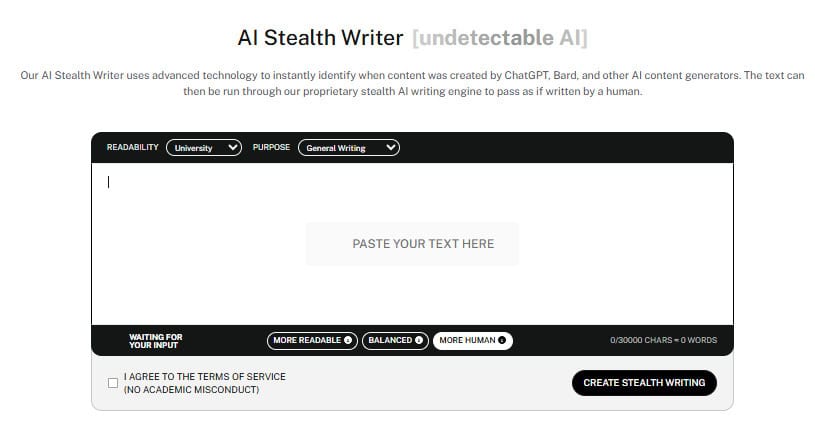
Lastly, always think of artificial intelligence tools as assistants and not a replacement for your own effort.
Use it to brainstorm and research all you want, but make sure whatever you are submitting is a reflection of your understanding.
You can also use Undetectable AI’s AI Paragraph Generator and Writer to develop well-structured, original paragraphs that reflect your own ideas while maintaining a natural writing style.
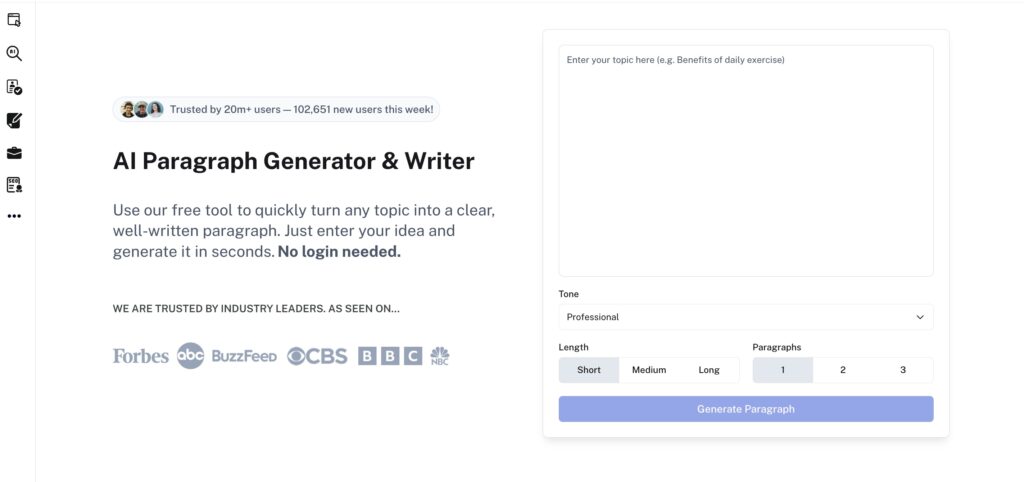
It’s an excellent companion for students who want to use AI responsibly—helping transform outlines or research notes into complete, authentic paragraphs without triggering AI detectors.
Alternatives Teachers Use Alongside AI Checkers
The advice of not relying totally on AI is not for students alone. Teachers also need to use AI as a collaborator.
They need to combine strategies that make their classrooms AI-friendly and educate at the same time.
The alternatives that teachers can use include:
- Having students document their research and writing process. That way, teachers can see how involved the students were in their assignment.
- Asking questions that students are likely to use AI for in class, and asking them to solve it with their colleagues
- Creating assignment questions that require students to use their personal experiences to solve
- Encouraging group work and discussions
- Having students explain and present their assignments verbally
Creating a safe space for students to use AI ethically is a good learning strategy.
Students become more open about when and how they used artificial intelligence instead of being afraid of disciplinary actions.
Discover more tools here, or test our AI Detector and Humanizer in the widget below!
Conclusion
It would be hard to answer the question “What AI checker do most teachers use?” This is because there are no right answers.
The AI Checker used depends on the school and teacher.
Some rely on tools like GPTZero, but most teachers are now leaning towards Undetectable AI Detector, because it is user-friendly and it detects content for various generative AIs easily.
Teachers are not relying on detectors alone to make their final judgment. AI checkers are part of the means to an end, which is upholding academic integrity and honesty.
With Undetectable AI’s AI Humanizer and AI Stealth Writer, educators and students alike can create text that is authentic, clear, and responsibly polished.
So it is important that teachers and students realize that AI is just a tool, and how we use it is what matters. And when it comes to using AI the right way, trust Undetectable AI.
